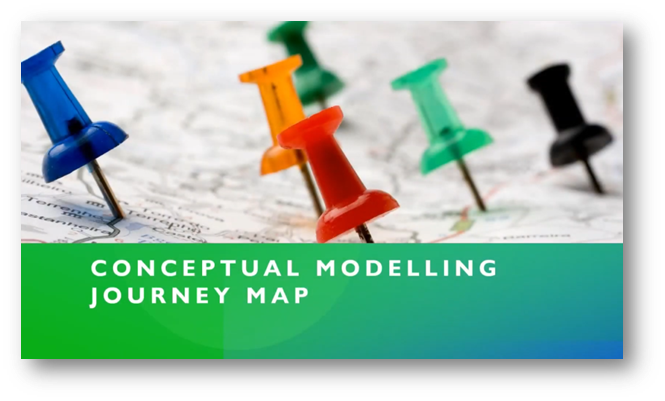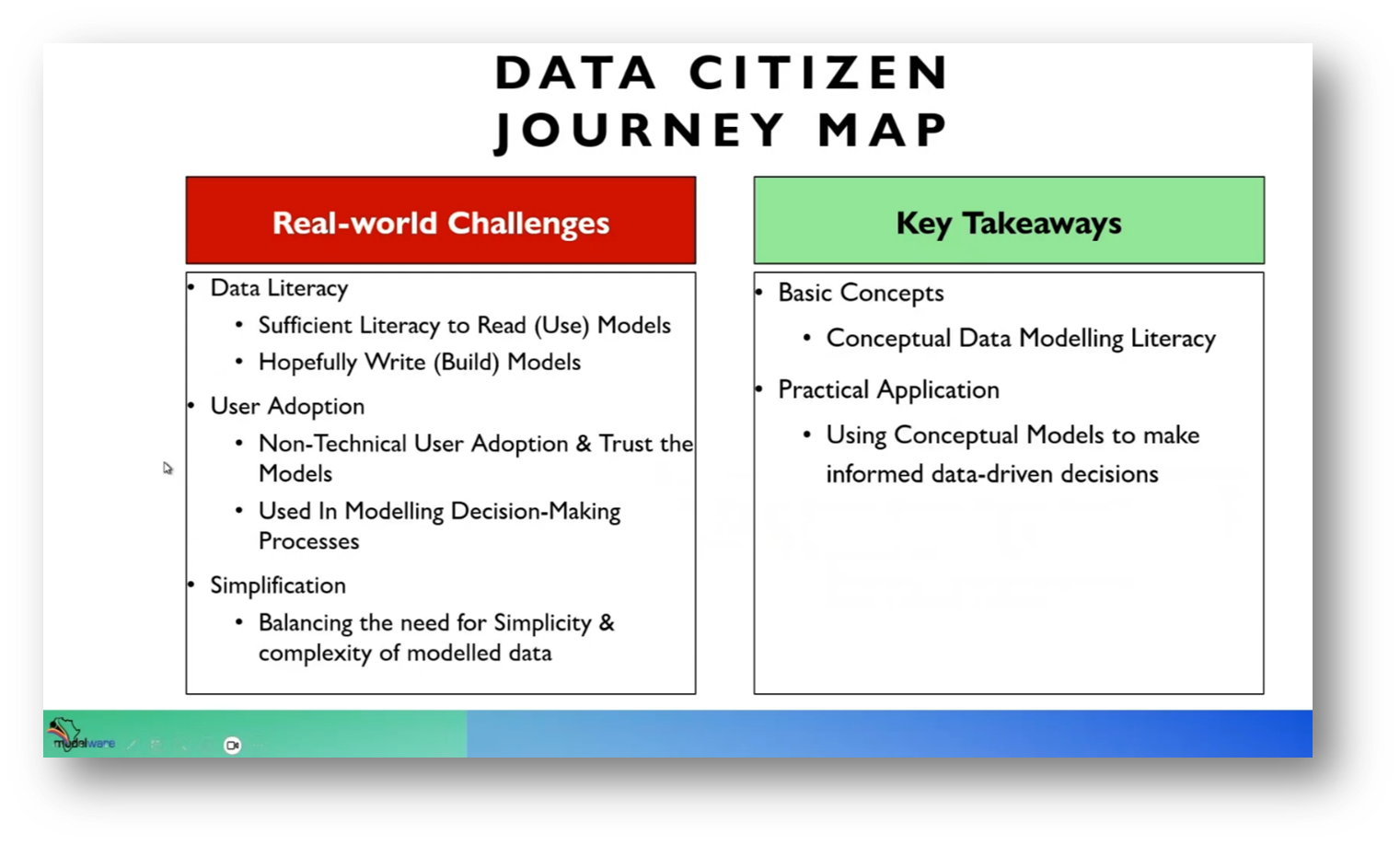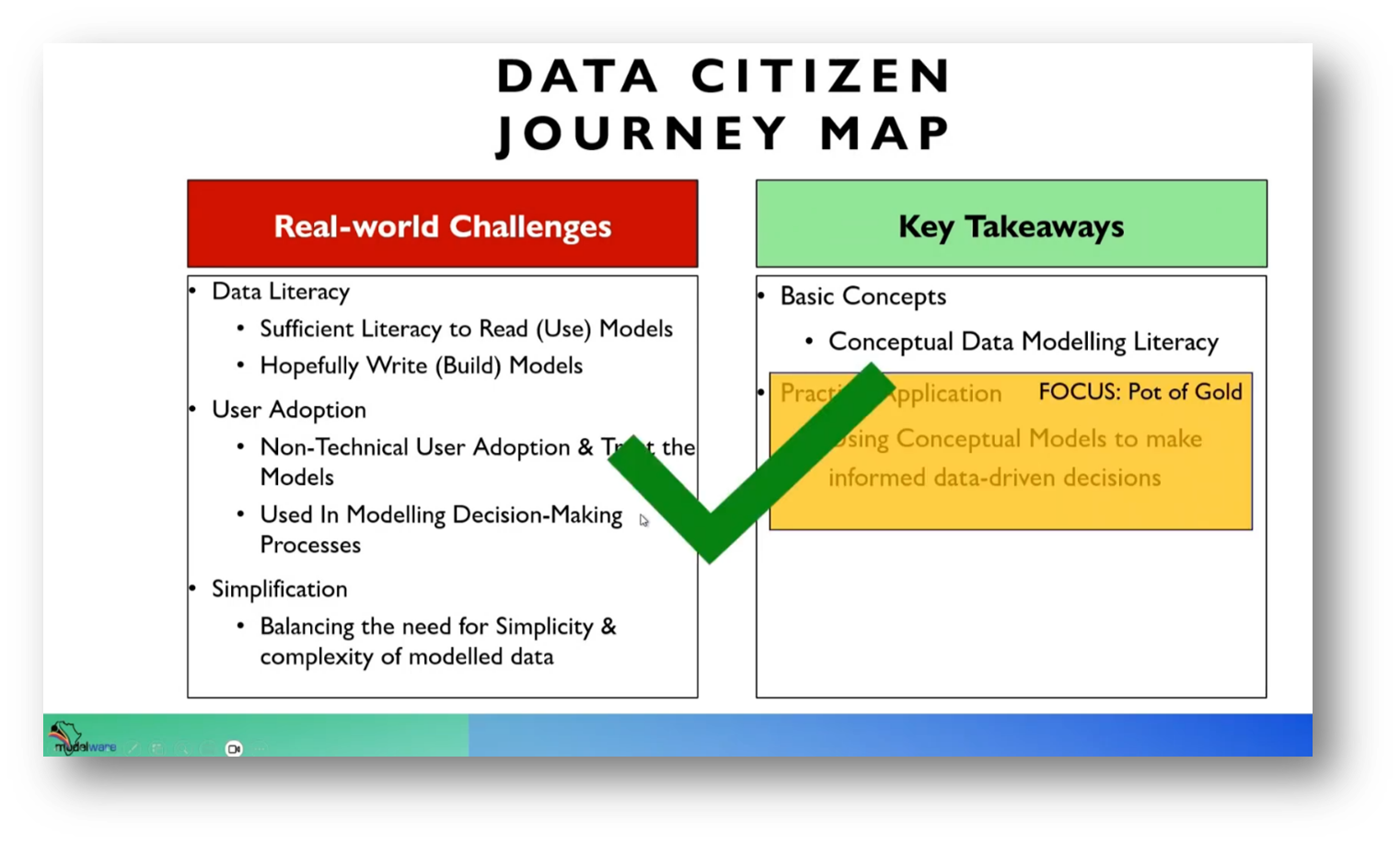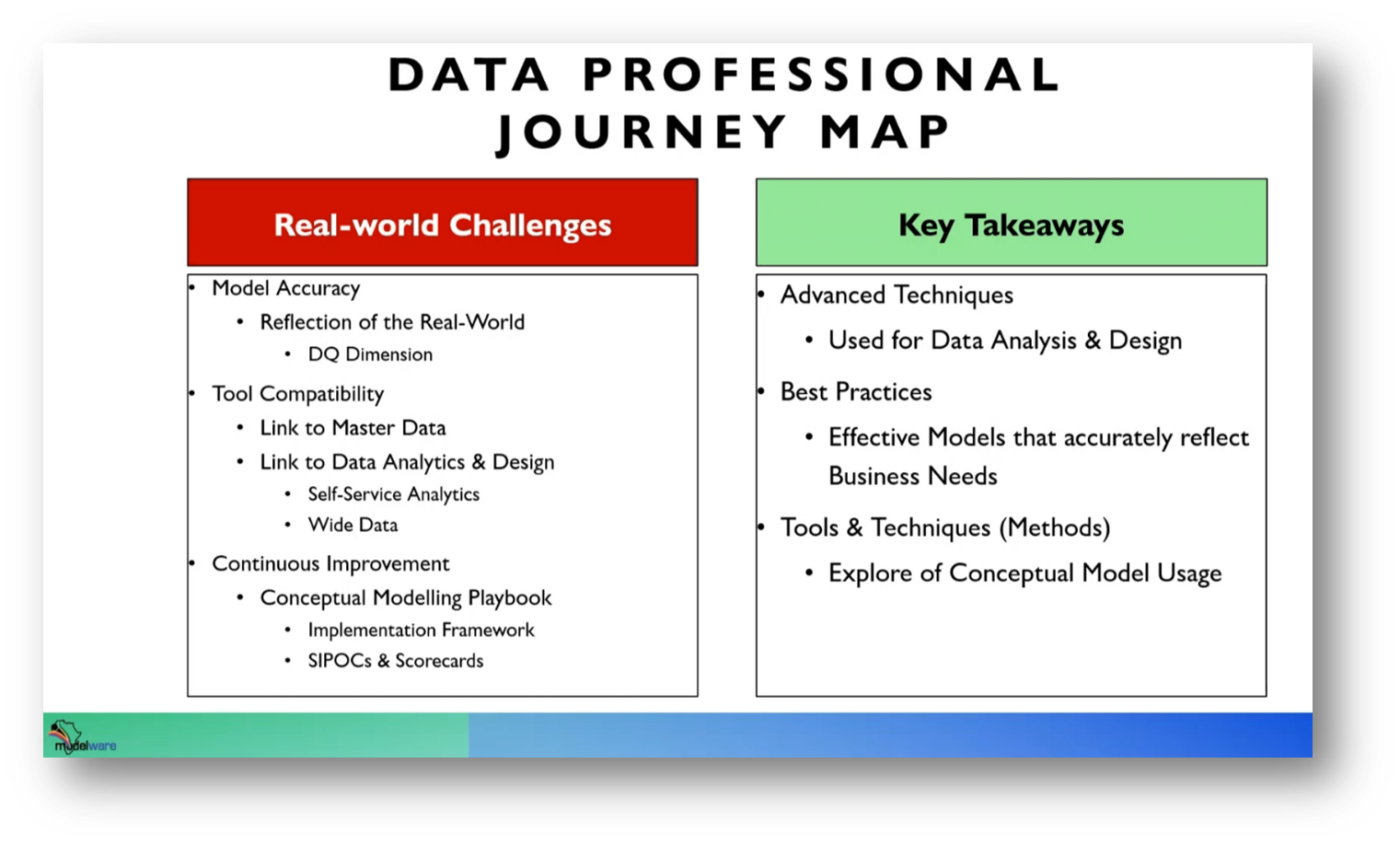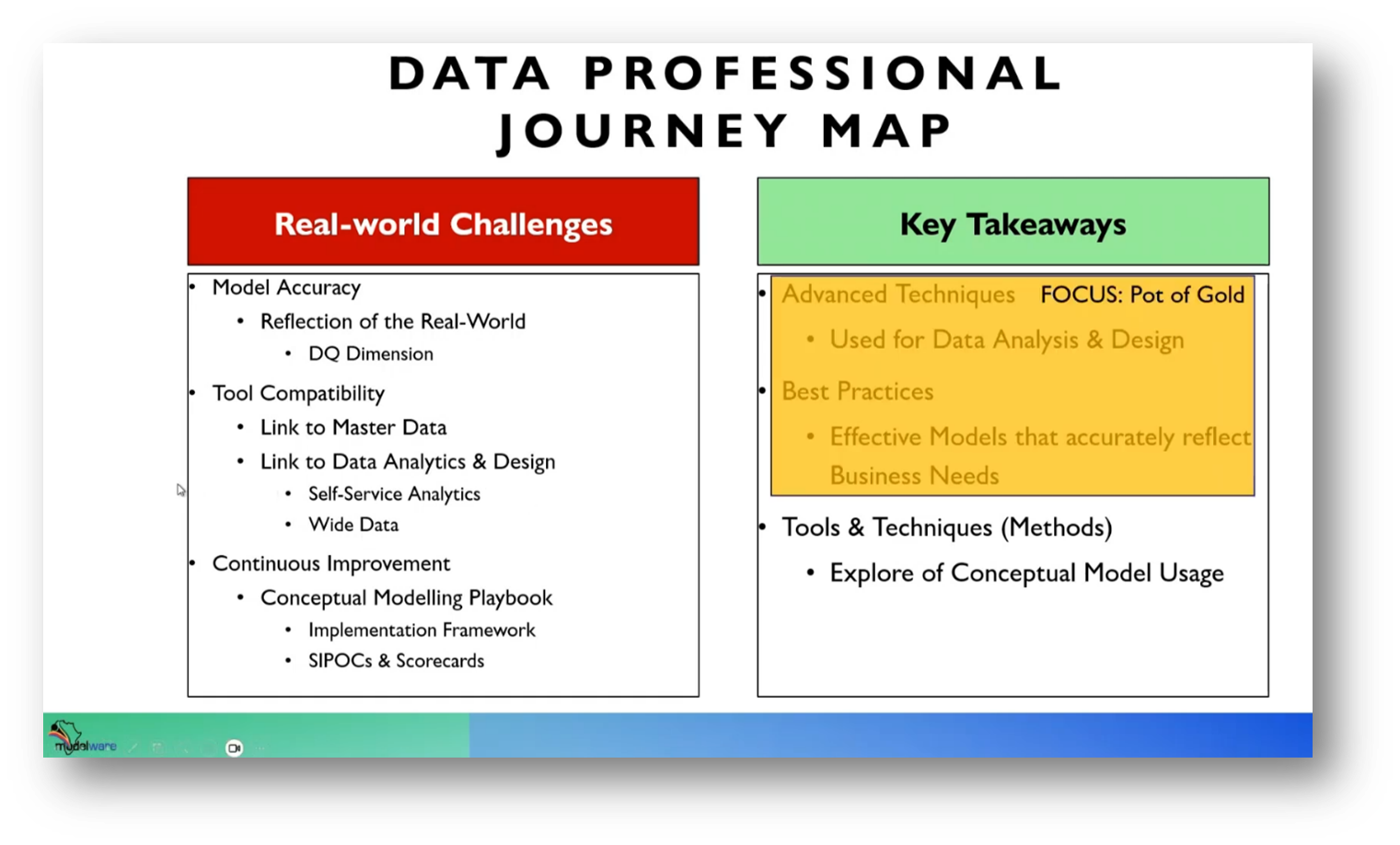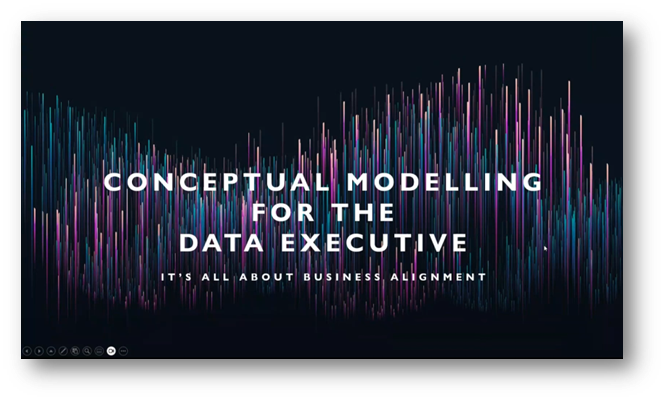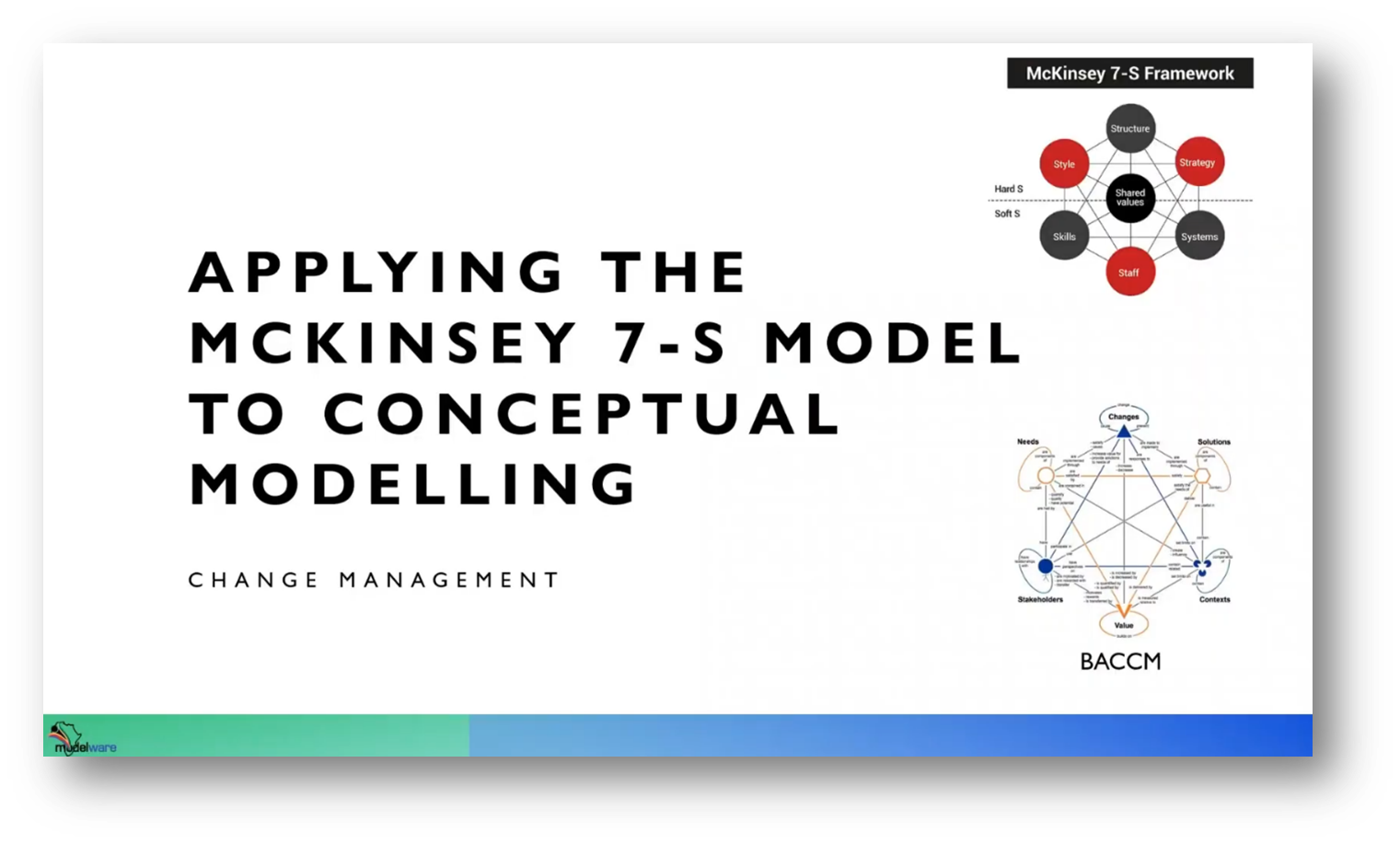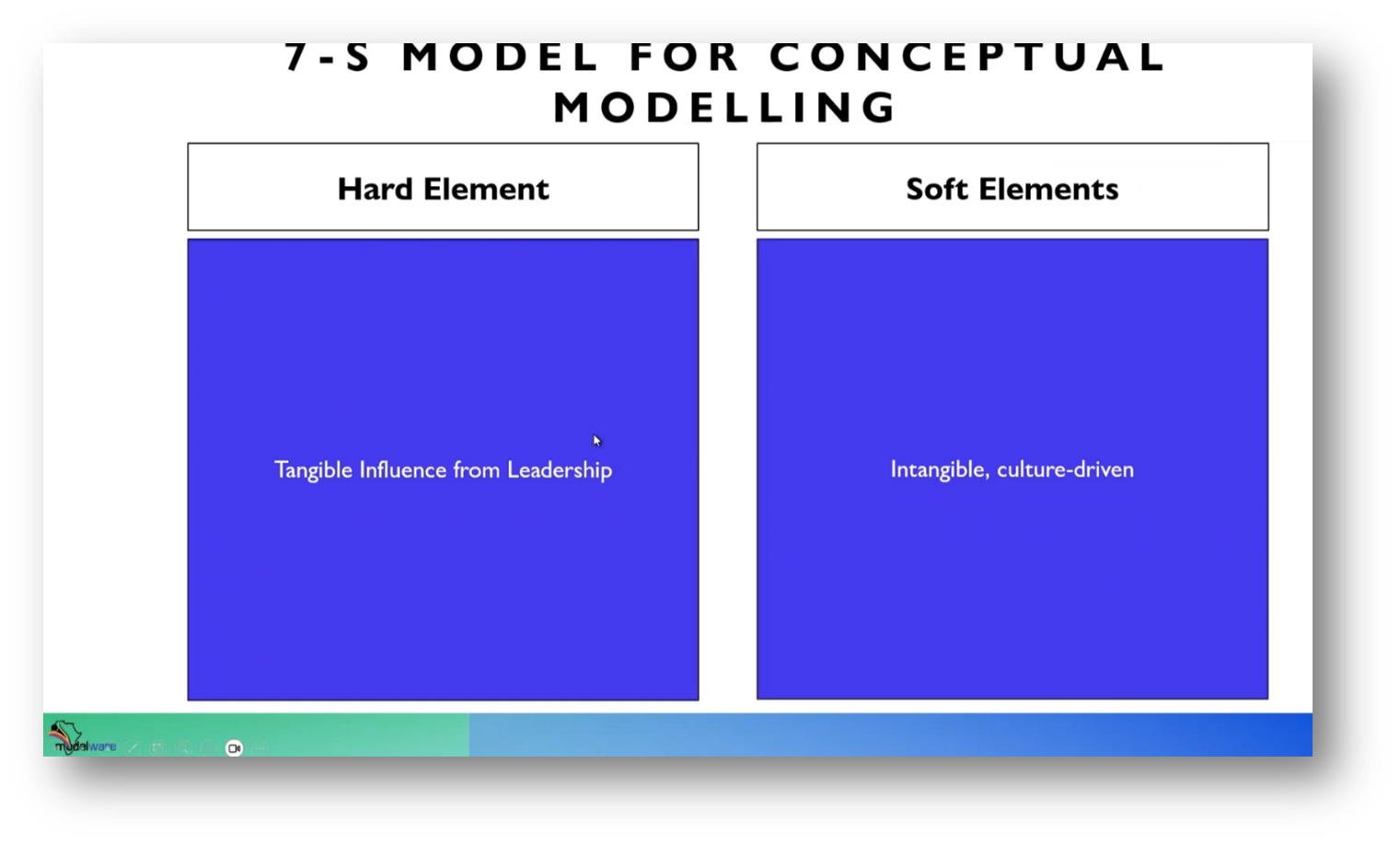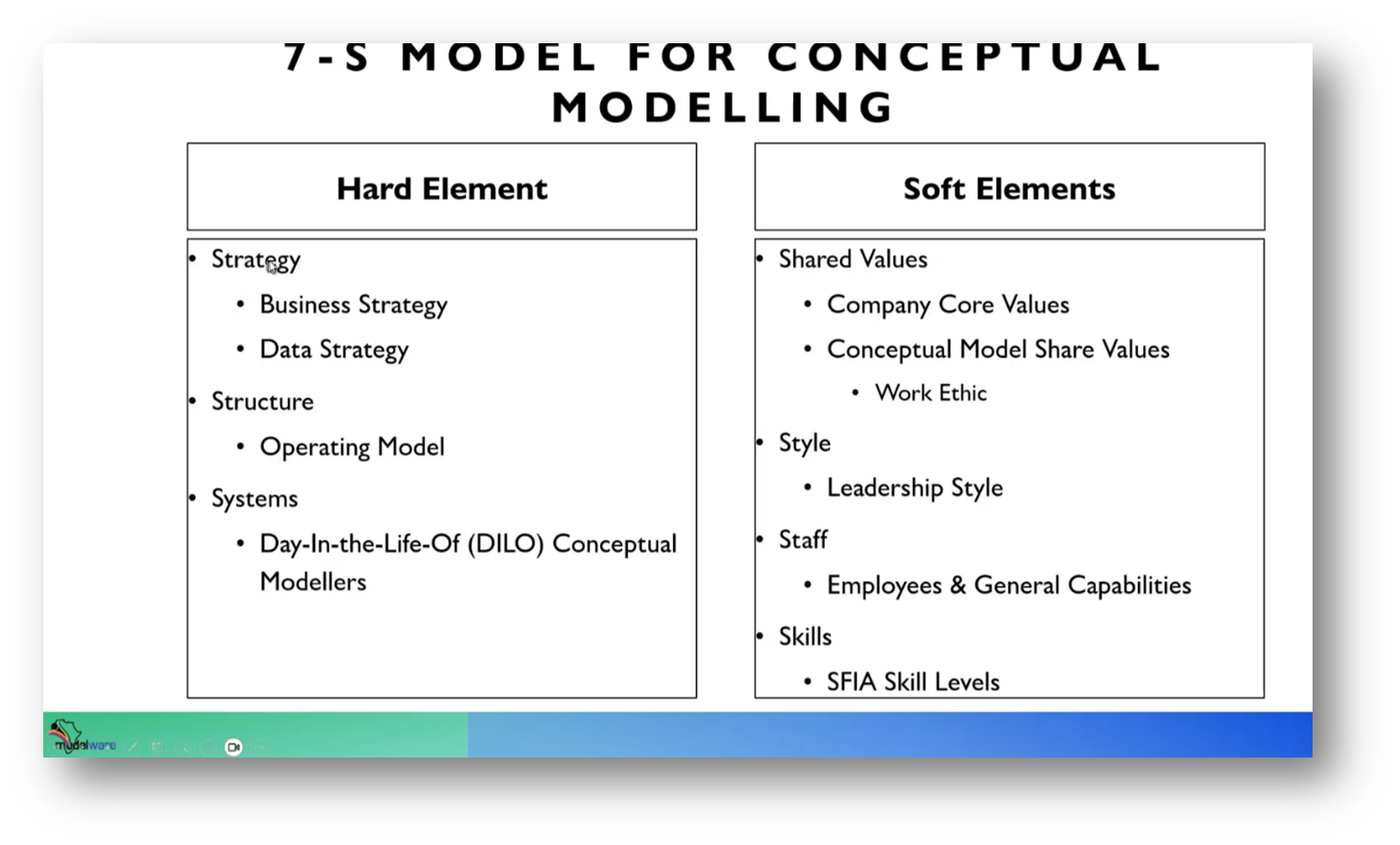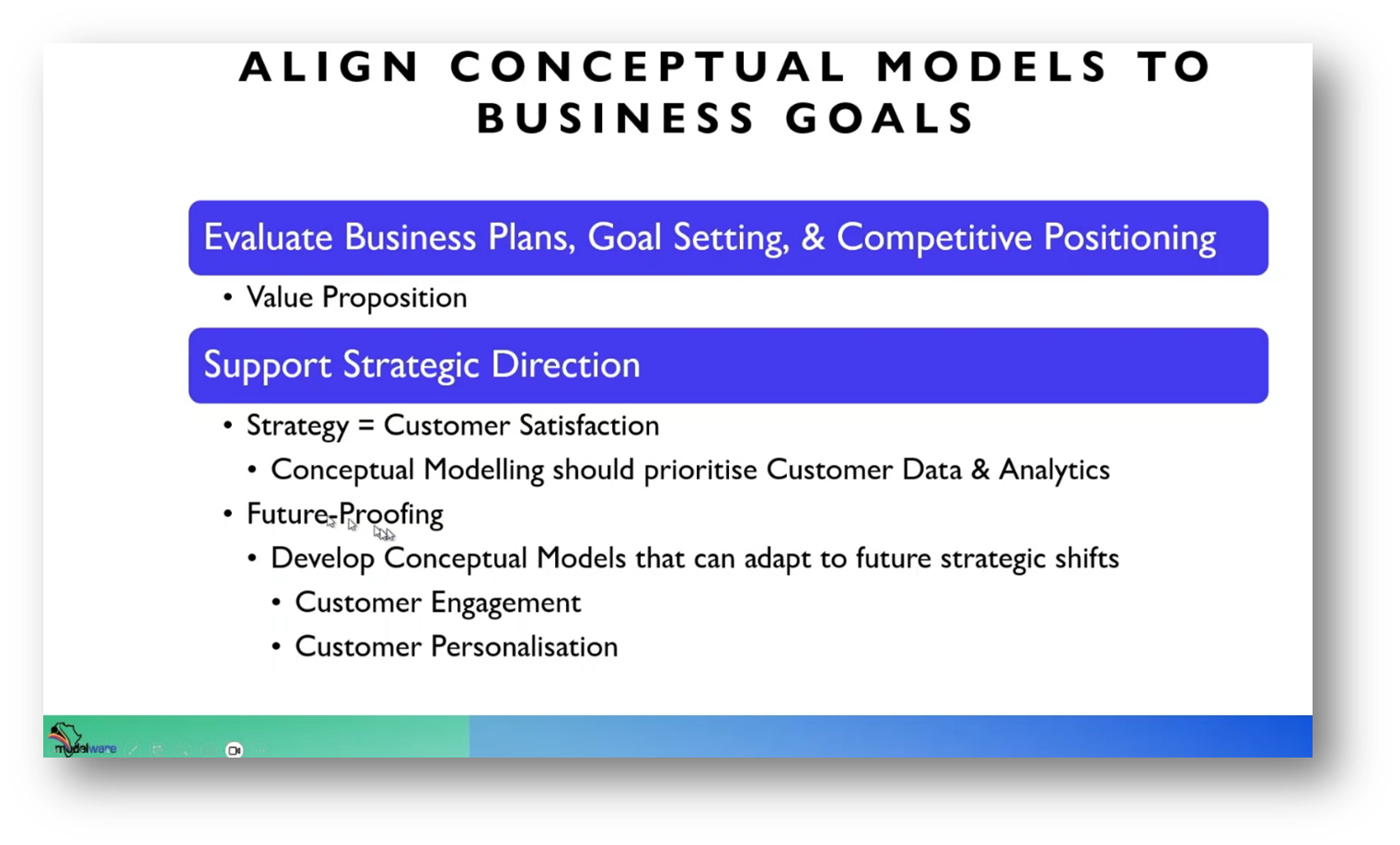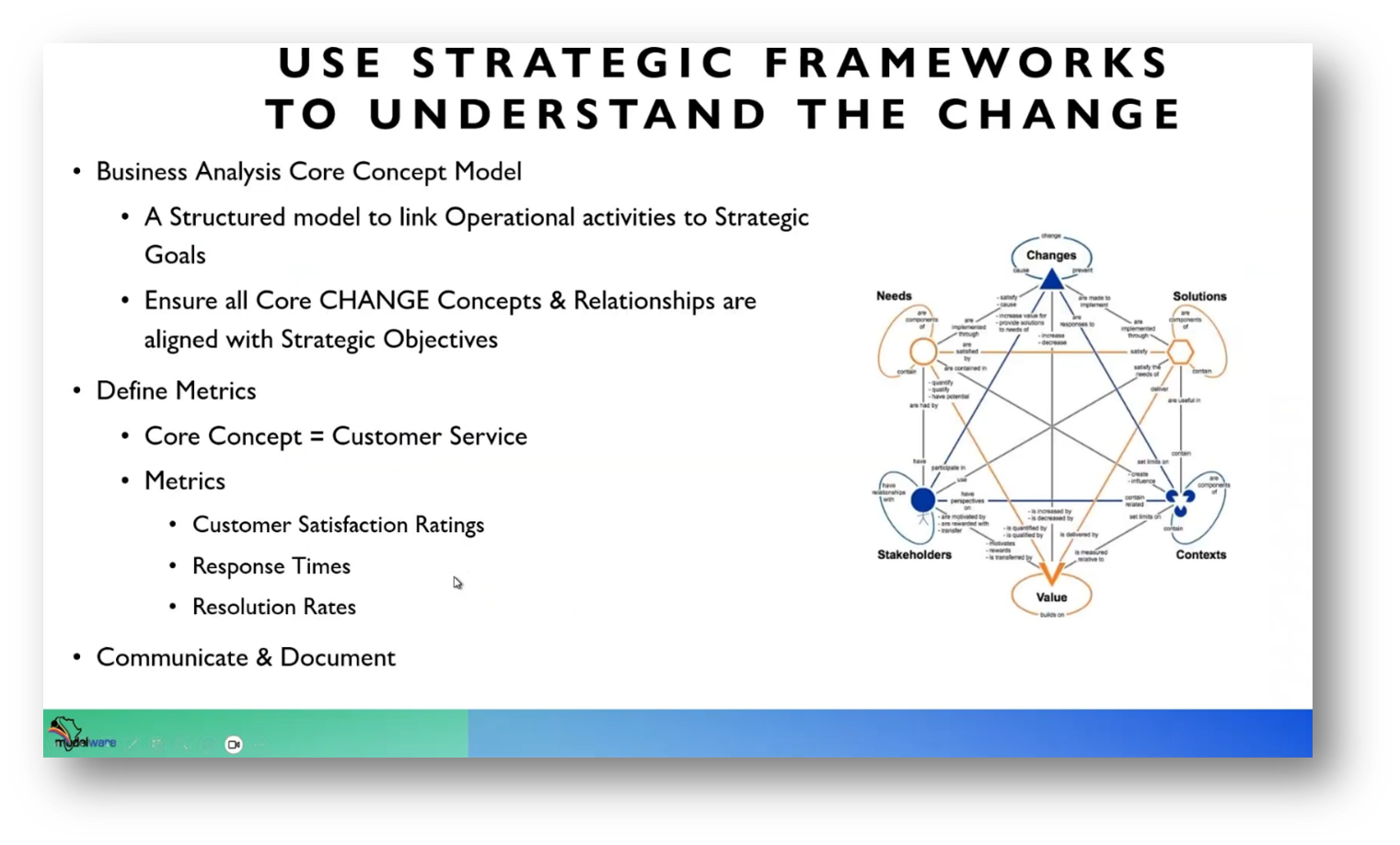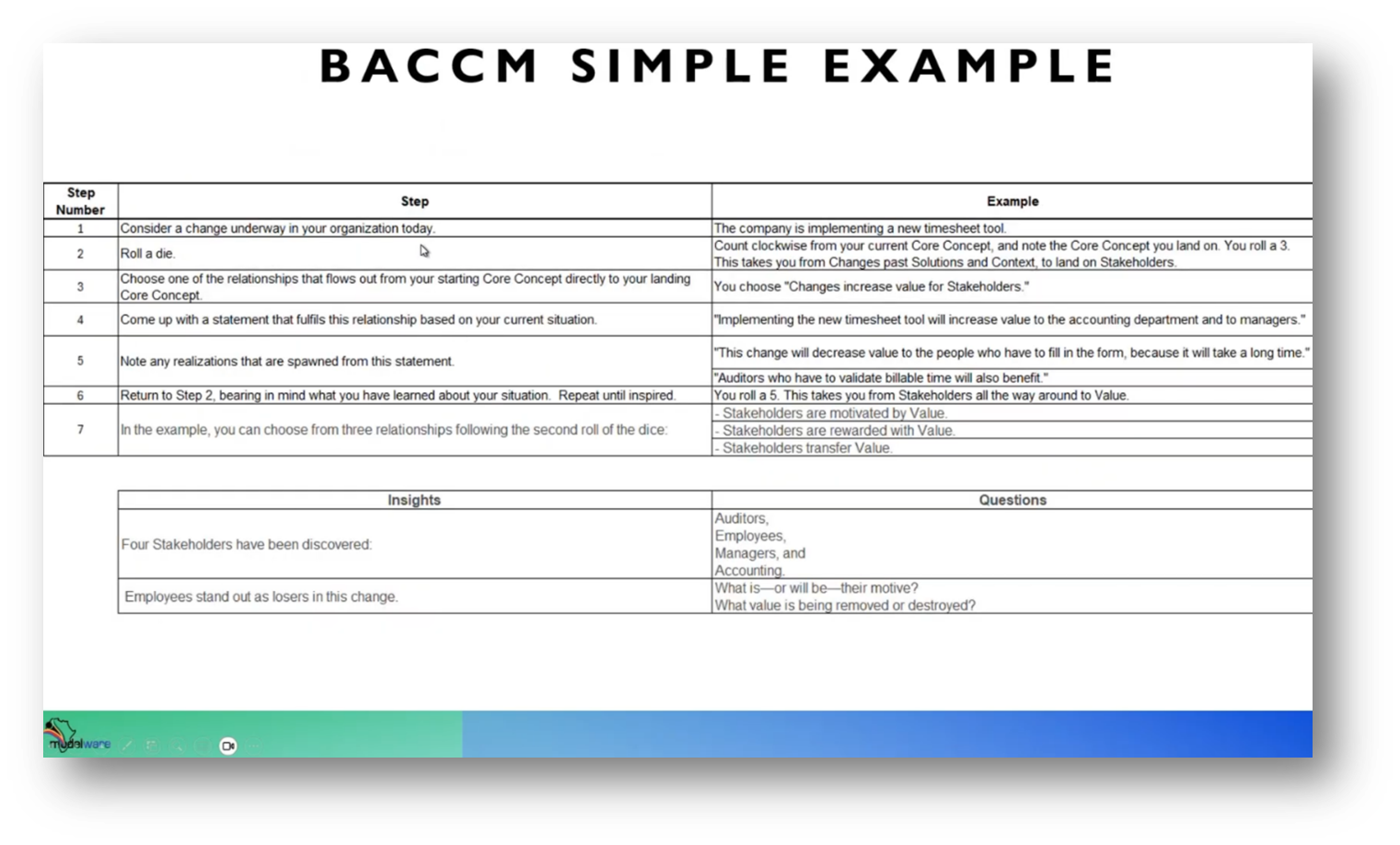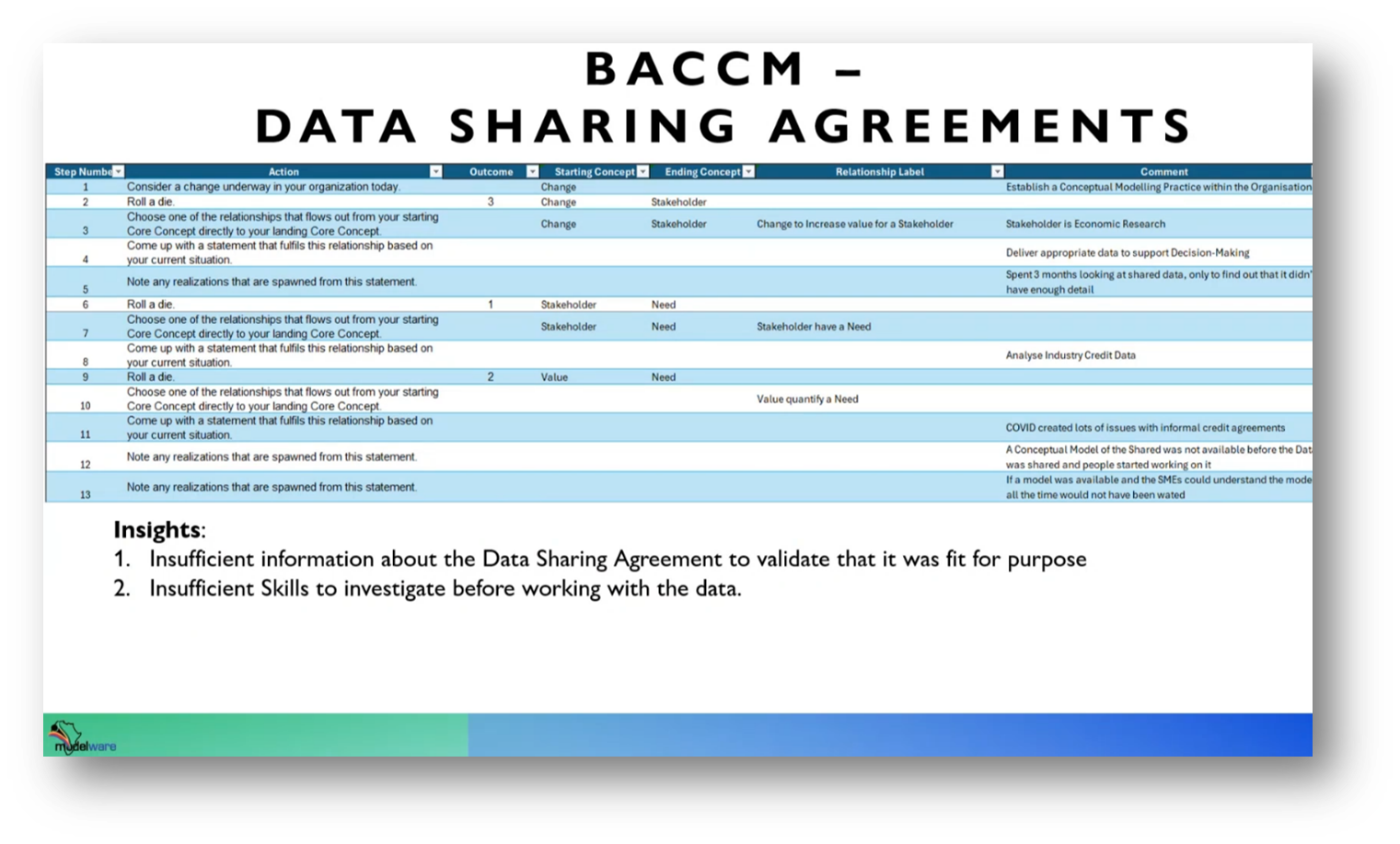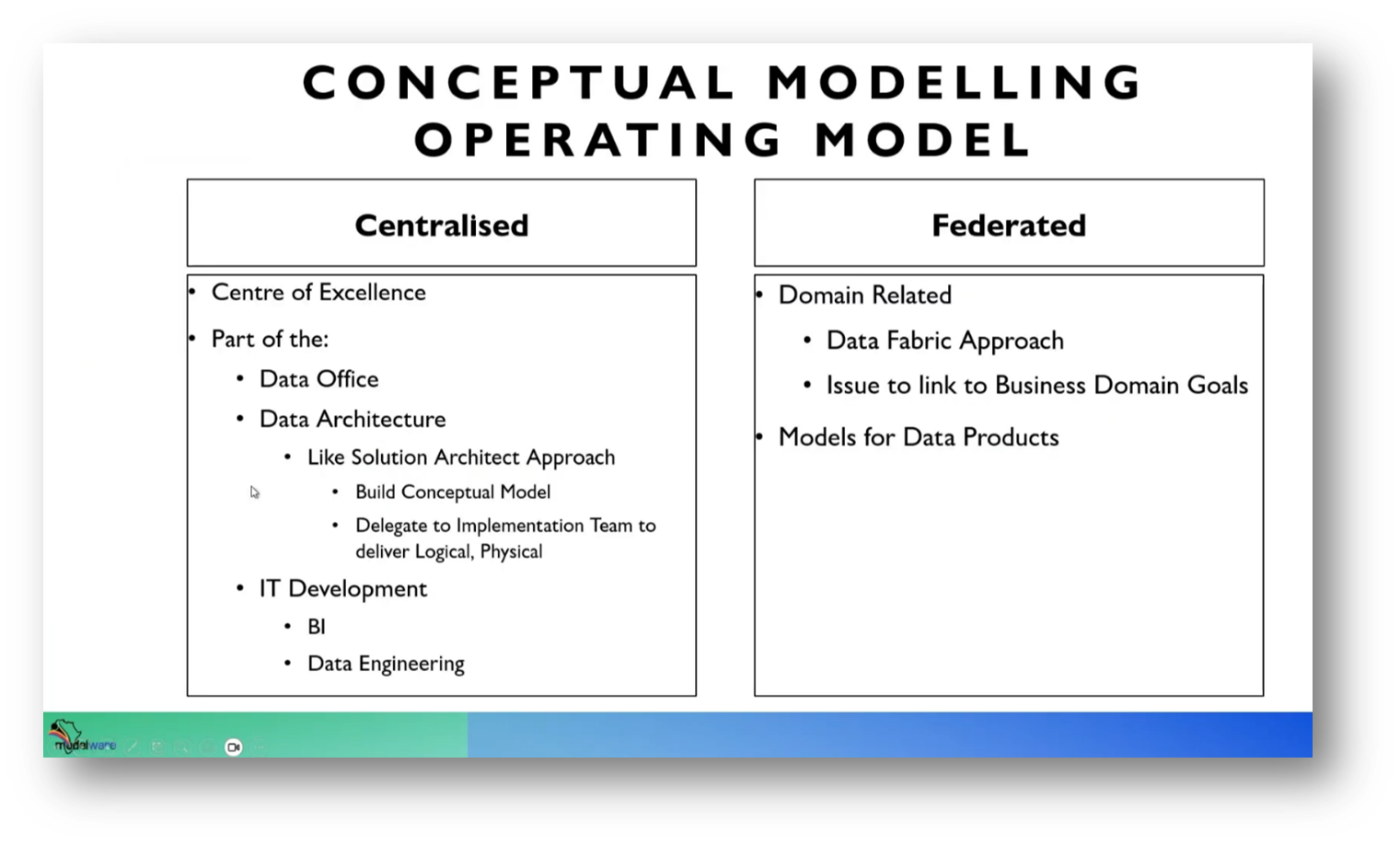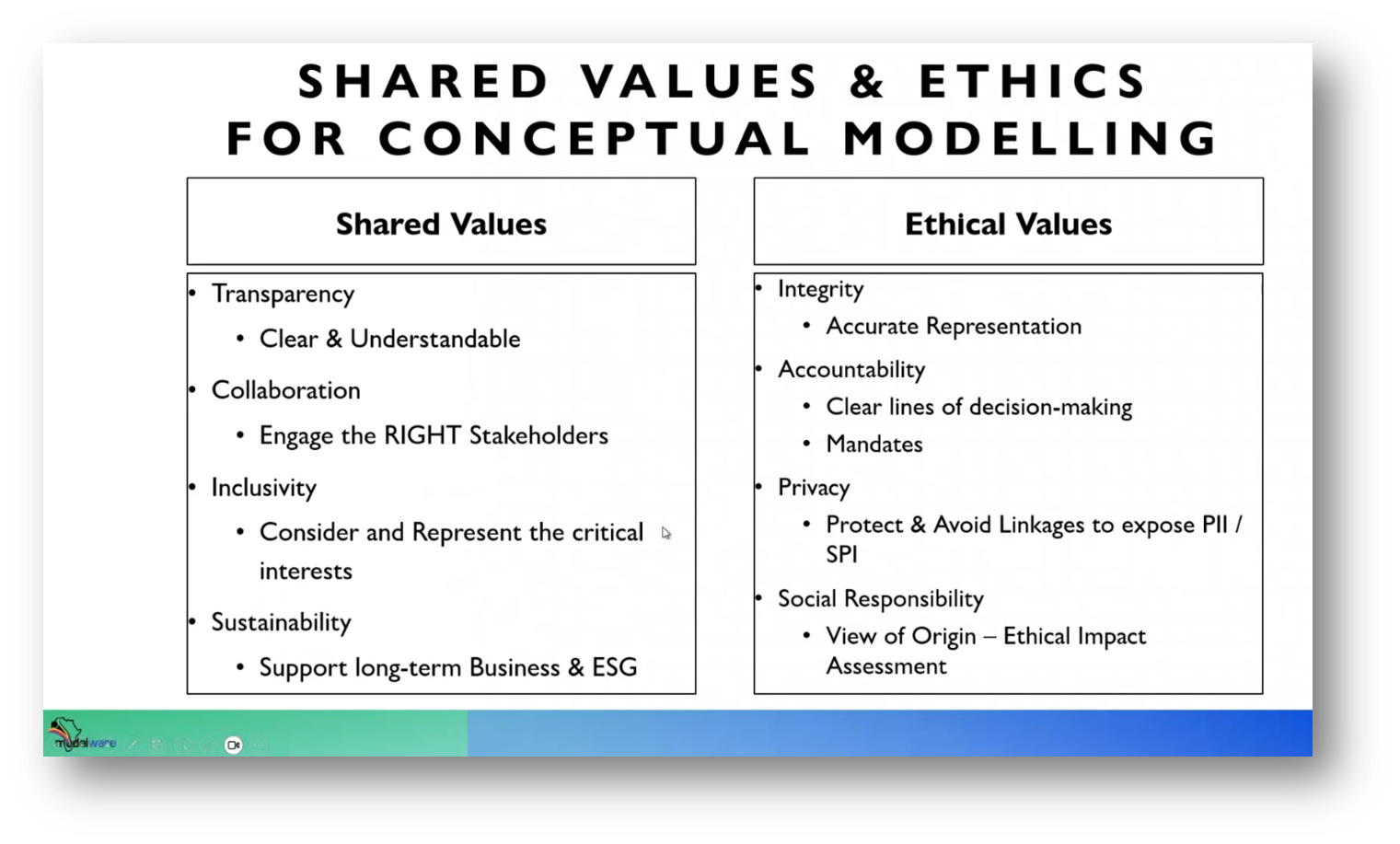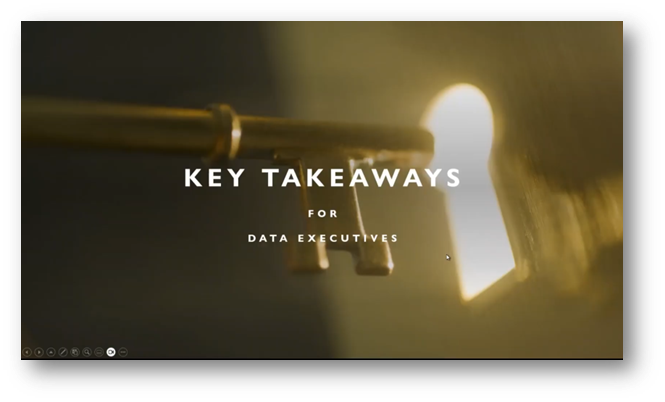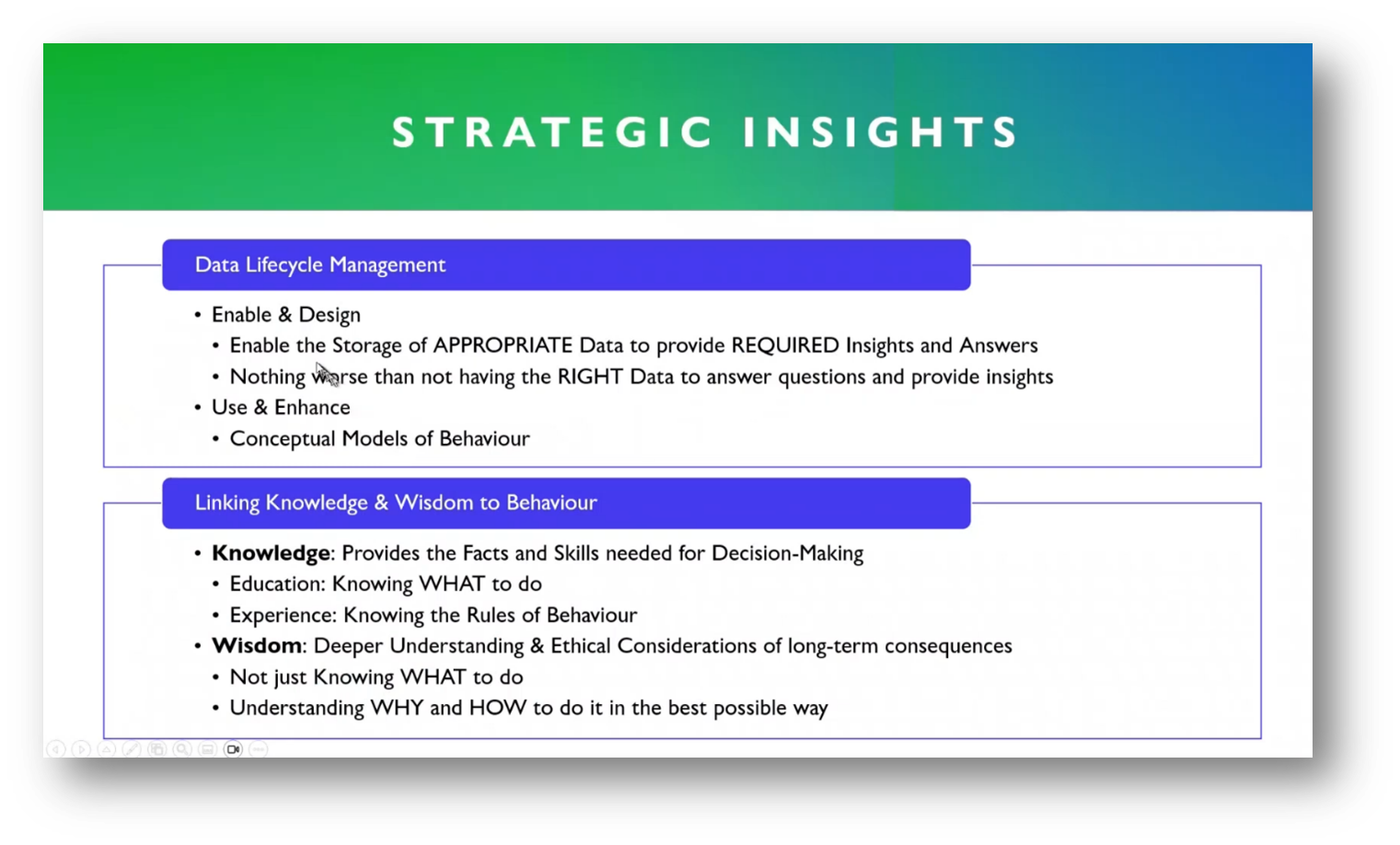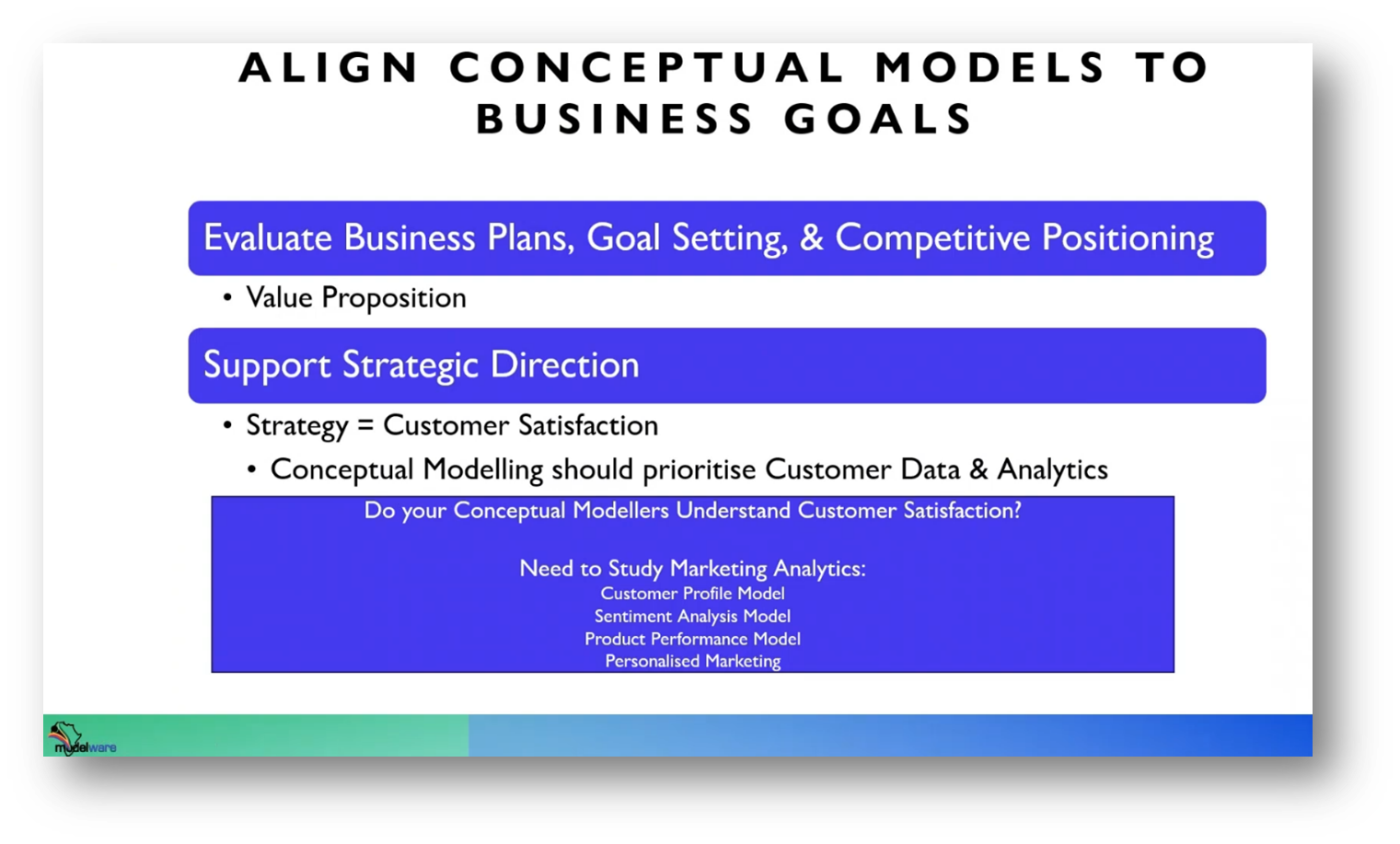The Conceptual Modelling Journey Map for Data Executives
Executive Summary
This webinar focuses on the critical aspects of Data Management and modelling. Exploring the challenges and solutions in Data Modelling and emphasising the importance of choosing the right Data Model for database management. Howard Diesel addresses the strategic insights and ethical considerations, highlighting the significance of shared values, leadership style, and skills in Data Modelling. Additionally, the role of Data Management in business strategy and operationalisation and the importance of Data Modelling and strategy in business operations. This instalment in the webinar series, ‘The Conceptual Modelling Journey Map,’ encapsulates the core concepts of Data Management and Data Modelling and their strategic implications in today's business landscape.
Webinar Details
Title: The Conceptual Modelling Journey Map for Data Executives
Date: 08 August 2024
Presenter: Howard Diesel
Meetup Group: Data Executives
Write-up Author: Howard Diesel
Contents
Understanding and Implementing Concepts in Data Management
The Challenges and Solutions in Data Modelling and Its Importance for Data Citizens
The Importance of Choosing the Right Data Model in Database Management
Overcoming Challenges in Data Modelling and Architecture
Strategic Insights and Data Modelling: A Discussion on Challenges and Solutions
Understanding the Role of Data Management in Business Strategy and Operationalisation
Importance of Shared Values, Leadership Style, and Skills in Data Modelling
Challenges and Considerations in Data Management and Ethical Considerations
Importance of Data Modelling and Strategy in Business
Business Analysis's Core Concept Model: A Conversation on Change Concepts and Stakeholder Engagement
Understanding and Implementing Concept Models in Organisational Change
Understanding and Addressing Customer Churn: A Theoretical Modelling Approach
Challenges and Experiences in Data Sharing Agreements
The Right Operating Model for Data Modelling
Implementation and Ethical Considerations of Data Modelling
Skill Levels and Talent Strategy in the Information Age
Understanding Data Life Cycle Management and Strategic Insights
Understanding the Importance of Data Architecture and Strategy in Business
The Importance of Correct Data Modelling and Planning in Business Operations
Understanding and Implementing Concepts in Data Management
In the final week of ‘The Conceptual Modelling Journey Map,’ Howard Diesel mentions having covered the responsibilities of a Data Manager in defining conceptual modelling as a practice and ensuring scalability to evolving business needs. Additionally, in the previous weeks, Howard covered the relationship between conceptual modelling and Data Governance, emphasising the importance of aligning with other conceptual models beyond conceptual Data Modelling. For instance, understanding advanced analytics or statistical models and their data requirements is essential for effective management.
Figure 1 Conceptual Modelling Journey Map
Figure 2 Data Manager Journey Map
Figure 3 Data Manager Journey Map Two
The Challenges and Solutions in Data Modelling and Its Importance for Data Citizens
Howard goes on to mention the importance of educating data citizens to read and use Data Models, sharing personal experiences of enabling SMEs to write Data Models and the impact it had on their business department. He reminds the attendees of the challenge of entering new domains as a Data Modeller and the need for thorough preparation and seeking industry models for understanding. Howard then emphasises the importance of being well-prepared when entering new areas to avoid underperforming and suggests leveraging common Data Models and reaching out for assistance when facing challenges.
Figure 4 Data Citizen Journey Map
The Importance of Choosing the Right Data Model in Database Management
It's important to carefully consider different conceptual models when working with data. Understanding when to choose a specific model, such as Temporal over Data Vault, is crucial in addressing tricky situations. For instance, using the wrong storage type for certain data can lead to significant challenges, as seen in a case involving a 7-terabyte database at an insurance company. In this instance, the use of FILESTREAM in SQL Server helped alleviate the heavy relational space, highlighting the importance of selecting the right storage for the data type and business use case. Data Professionals need to pay attention to choosing the correct Data Model and understanding its proper utilisation, as each model serves a specific role in Data Management.
Figure 5 Data Citizen Journey Map Two
Figure 6 Data Professional Journey Map
Overcoming Challenges in Data Modelling and Architecture
Howard raises the issue of justifying Data Modelling within organisations, citing a previous encounter where someone claimed that Data Modelling and architecture are obsolete. He expresses surprise at this perspective but also welcomes the challenge of justifying the relevance of Data Modelling. Howard acknowledges the need to understand differing viewpoints and stresses the importance of continuous learning in such situations.
Figure 7 Data Professional Journey Map Two
Figure 8 Data Executive Conceptual Modelling Journey
Strategic Insights and Data Modelling: A Discussion on Challenges and Solutions
Executives must justify the need for Data Modelling for the business and demonstrate how it can improve business alignment and provide valuable insights. Real-world challenges include justifying the need for Data Modelling, especially in agile environments where it may be perceived as not contributing to value and speed. Change management, as highlighted by Business Analysis Core Concept Model (BACCM) and, McKenzie model and the 7S Framework, is a key aspect that executives need to address. The McKenzie model introduces the 7S framework, categorising elements into hard and soft influences, and emphasises the need to address both tangible and intangible issues for successful conceptual modelling within the organisation.
Figure 9 Data Executive Conceptual Modelling Journey Two
Figure 10 "Conceptual Modelling for the Data Executive: It's all about Business Alignment"
Figure 11 Applying the Mckensy 7-s Model to Conceptual Modelling
Figure 12 7-s Model for Conceptual Modelling
Understanding the Role of Data Management in Business Strategy and Operationalisation
To align the data strategy with the business strategy, the Chief Data Officer (CDO) should focus on justifying how a conceptual model improves business strategy and alignment while establishing an operating model and managing systems. The CDO also needs to create a "day in the life of" scenario to help employees understand how the changes will impact their daily routines, which can be instrumental in gaining their support and cooperation. This approach can be particularly useful when presenting to the executive team to ensure a clear understanding of the necessary steps.
Figure 13 7-s Model for Conceptual Modelling Two
Importance of Shared Values, Leadership Style, and Skills in Data Modelling
Howard emphasises ethical considerations in Data Modelling and its impact on organisational values and capabilities. Professionals need to understand the ethical implications of their work and the challenges of adapting to new areas and industries. It's important also to understand the significance of data in various business settings. Additionally, the challenges of learning new models and industry-specific concepts must also be considered. Thus, there is a need for industry-specific certifications. Howard also emphasises the importance of the Chief Data Officer (CDO) considering these factors when introducing conceptual modelling into an organisation.
Challenges and Considerations in Data Management and Ethical Considerations
The importance of balancing hard and soft elements in Data Management is discussed. Howard raises concerns about the impact of leadership style on conceptual modelling practices and the need for the right leadership style for Data Modelling. He highlights the significance of shared values, referencing a discussion on ethics in Data Governance. Thus, transparency in data collection and the ethical responsibilities of data professionals are prompting a re-evaluation of the code of ethics in the field.
Importance of Data Modelling and Strategy in Business
Howard goes on to cover aligning architecture standards, data standards, and securities with the business strategy's value proposition. Underscoring the importance of prioritising customer data and analytics to enhance customer satisfaction. Howard also emphasises the need for proper Data Modelling and the availability of data scientists to build models that address customer satisfaction. Additionally, it highlights the importance of futureproofing by developing concept models adaptable to future strategic shifts, referencing the BACCM framework.
Figure 14 Align Conceptual Models to Business Goals
Figure 15 Align Conceptual Models to Business Goals Two
Business Analysis's Core Concept Model: A Conversation on Change Concepts and Stakeholder Engagement
In the research process, Howard mentions stumbling upon a Business Analysis Core Concept Model (BACCM). While comparing it to the International Institute of Business Analysis (IIBA), he found that the model focuses on the core change concepts and emphasises the importance of understanding stakeholders, the value of change, and the appropriate solutions. It also highlights the need to define metrics, consider customer service needs, measure value, and effectively communicate with stakeholders. The model aligns with business analysis's definition of enabling change in an organisational context by defining needs and recommending solutions that deliver value to stakeholders. Thus, the model acts as a valuable framework for conceptual modelling and justifies its necessity. It can also be used to illustrate the significance of conceptual modelling in practical examples.
Figure 16 Use Strategic Frameworks to Understand the Change
Figure 17 BACCM
Understanding and Implementing Concept Models in Organisational Change
The BACCM model provides a structured approach to analysing and understanding organisational changes. By rolling dice and moving through core concepts, the model helps document a proposed change's relationships and potential impacts. It also highlights the importance of considering various stakeholders and their potential resistance to change. The example of implementing a new timesheet tool illustrates how employees may face challenges and resistance to the change, emphasising the need for a comprehensive resistance plan. Additionally, Howard notes that the model helps uncover previously unrecognised stakeholders and their roles in the change process.
Figure 18 BACCM Simple Example
Understanding and Addressing Customer Churn: A Theoretical Modelling Approach
To demonstrate Conceptual Modelling, Howard shows a spreadsheet with Reference Data and an example of customer churn he created. While addressing a real-world issue of customer churn at an organisation, he notes that he realised the importance of identifying missing entities in the Data Model. Despite analysing the rate of customers leaving, customer lifetime was overlooked due to a lack of understanding of that area. This led to the realisation that sufficient involvement of subject matter experts (SME) in conceptual modelling and customer behaviour development is crucial. The oversight of missing entities in the Data Modelling process highlighted the need for a better understanding of the domain and effective communication with SMEs to ensure comprehensive Data Modelling.
Figure 19 BACCM - Customer Churn
Figure 20 Reference Data
Challenges and Experiences in Data Sharing Agreements
Howard mentions encountering challenges with data-sharing agreements while working for a customer who required industry credit data. Due to the informal nature of credit agreements during COVID, the customer obtained large amounts of data from credit providers but found it to be unusable after three months of analysis by data scientists and econometricians. The lack of a proper Data Model and the absence of relevant data investigation skills led to this outcome. This experience highlights the importance of examining models and possessing the necessary skills before engaging with data and the need for clear conceptual definitions in data analysis.
Figure 21 BACCM - Data Sharing Agreements
The Right Operating Model for Data Modelling
The choice between a centralised and federated approach arises when considering the operating model for conceptual modelling. Howard mentions a previous experience in Saudi Arabia that involved initiating business-led Data Modelling. The outcome sparked debates about whether this responsibility should lie with IT. A decision was made to involve business departments in Data Modelling to demonstrate its value and the emergence of a federated operating model for Data Modelling. This, influenced by the data products and data fabric approach, presents interesting options for consideration. When choosing a model, it's essential to understand the existing culture, assess available resources, and determine who will be responsible for the modelling process.
Figure 22 Conceptual Modelling Operating Model
Implementation and Ethical Considerations of Data Modelling
The conceptual modelling process emphasises the importance of defining principles, policies, procedures, and implementation frameworks. It also stresses the need to consider technology reference architecture and skills gap analysis for successful operationalisation. Additionally, Howard highlights the significance of soft elements such as shared values, ethics, inclusivity, and accurate representation in conceptual modelling. Emphasises the ethical considerations of accurate representation, accountability, mandates, privacy, and social responsibility while dealing with Data Modelling.
Figure 23 Conceptual Modelling Way of Work (DILO)
Figure 24 7-S Soft Elements
Figure 25 Shared Values & Ethics for Conceptual Modelling
Skill Levels and Talent Strategy in the Information Age
Howard discusses the skills required for Data Modelling, database design, and analytics, focusing on SFIA (Skills For the Information Age). He emphasises the need to assess skill levels within the organisation and highlights the importance of building job profiles for handling Data Modelling, data engineering, and analytics. Howard also underscores the significance of recruiting individuals with the right analytical skills, problem-solving abilities, and business acumen to effectively handle conceptual modelling and interact with business stakeholders.
Figure 26 SFIA 8 Summary Chart
Figure 27 Conceptual Modelling Staff & Skills
Understanding Data Life Cycle Management and Strategic Insights
Focusing on life cycle management and strategic insights is imperative rather than starting the data life cycle with creating, obtaining, storing, and maintaining data. Additionally, it is crucial to incorporate analysis into the Plan and Design phase and not just rush into using and enhancing the data. Ensure that you don't miss out on Data Modelling and data architecture, as they are essential for the success of the data life cycle. Pay attention to enabling design to guarantee the right storage and necessary data for insights. Additionally, don't overlook the importance of conceptual models of behaviour during the use and enhance phase, as they are vital for understanding and learning behaviour. Linking knowledge and wisdom to behaviour is key, as wisdom goes beyond knowing what to do to understand why and how to do it in the best possible way.
Figure 28 Key Takeaways for Data Executives
Figure 29 Strategic Insights
Figure 30 Strategic Insights Two
Understanding the Importance of Data Architecture and Strategy in Business
Howard stresses the need to align business strategies with Data Management by collaborating closely with individual business units to understand their specific needs. Highlighting the importance of Data Governance and the role of data architects in defining data definitions and improving semantic clarity. Howard also emphasises the significance of representative data samples and reverse engineering Data Models to ensure accurate analysis.
Figure 31 Align Conceptual Models to Business Goals
Figure 32 Conceptual Modelling Journey Overview
The Importance of Correct Data Modelling and Planning in Business Operations
When creating business models, it is important to consider new entities and relationships carefully. Involving stakeholders early on will ensure proper communication and understanding of requirements. Howard shares the pitfalls of rushing through the modelling process and highlights the significance of asking fundamental questions about the nature of the data being worked on. Use the concept of "camera settings" as a metaphor for determining the level of perspective and flexibility required in Data Modelling and the potential risks of defaulting to overly abstract models.
If you would like to join the discussion, please visit our community platform, the Data Professional Expedition.
Additionally, if you would like to be a guest speaker on a future webinar, kindly contact Debbie (social@modelwaresystems.com)
Don’t forget to join our exciting LinkedIn and Meetup data communities not to miss out!


